Texas is the second biggest state in the nation, and its topography includes, swamps, forests, coastlands, mountains, urban cities, as well as deserts and canyons. Although deserts are harsh environments, they are home to diverse species that have learned to adapt to arid conditions. And some of those species in Texas can be dangerous, if not deadly. Read on to learn about the 7 most dangerous animals in Texas’s deserts.
Which Regions in Texas are Desert Climates?
There are four deserts in the United States, and Texas is home to one of them. At 200,000 square miles, the Chihuahuan Desert is the largest in North America. The Chihuahuan Desert extends well beyond the borders of Texas into New Mexico, Arizona, and the country of Mexico.
A northern portion of the Chihuahuan Desert is in the Trans-Pecos region, covering around 10% of the state. The Rio Grande cuts through the desert bringing a critical water source to the wildlife. The desert also contains Texas’s Guadalupe Mountain National Park and the Chisos Mountains in Big Bend National Park.
A List of the 7 Most Dangerous Animals in Texas’s Deserts
What animals are roaming this varied landscape, and which of those should you avoid? Read on for our list of the 7 most dangerous animals in Texas’s deserts.
1. Snakes
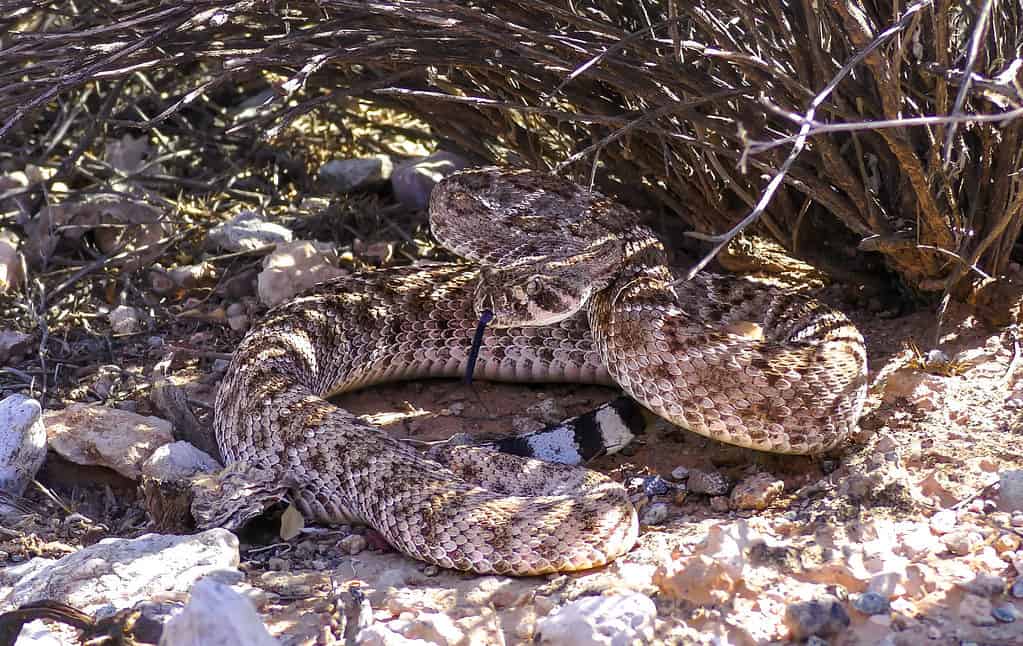
A Western diamondback rattlesnake bite can cause immediate pain and swelling to its victim.
©iStock.com/Banu R
It’s probably not surprising to see snakes first on our list. Texas is home to a diverse snake population. Although deserts are harsh environments with little water and vegetation, snakes are well adapted to thrive in arid conditions.
Four types of snakes living in Texas are venomous and include:
- Rattlesnakes
- Pit vipers (copperhead)
- Cottonmouth (water moccasins)
- Coral snakes
Out of these four types, cottonmouths are typically found near lakes, rivers, swamps, or other water sources. But the other three, rattlesnakes, copperheads, and coral snakes, do occupy desert environments.
One notable venomous snake is the Trans-Pecos copperhead, found only in far West Texas and northeastern Mexico. This dangerous snake is born ready to hunt, newborns are capable of finding and catching their prey immediately after birth. However, the Western diamondback rattlesnake is the most aggressive of the venomous snakes and is easily threatened. The Western diamondback is responsible for most of the snakebites in the U.S.
2. Scorpions
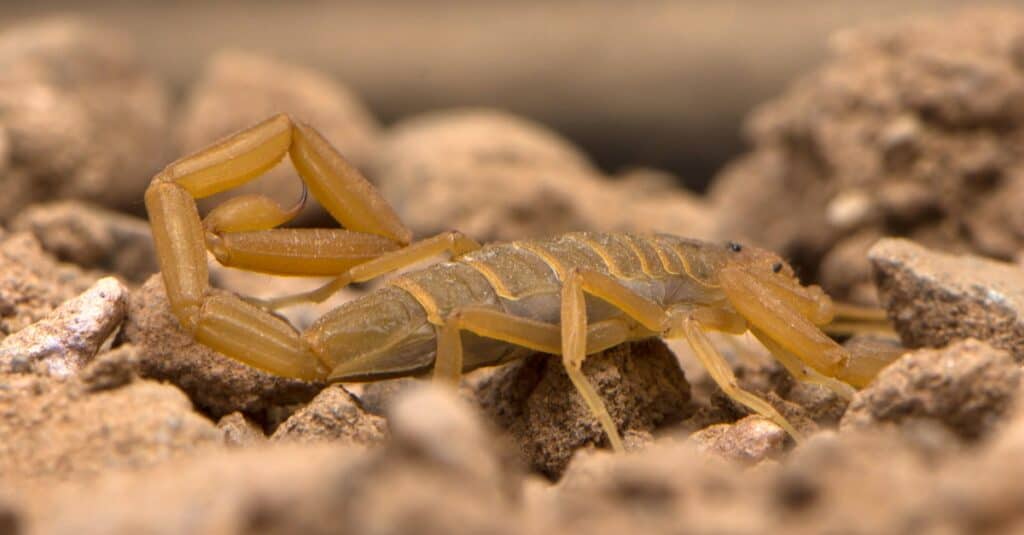
The most venomous in the U.S., a sting from the Arizona bark
scorpion
is known to be incredibly painful.
©iStock.com/Ledzeppelinriff
Second on our list is a creature much smaller than a snake, but this arachnid species can be a dangerous threat to humans. Scorpion venom can cause allergic reactions, difficulty breathing, and vomiting.
While most of the scorpions found in Texas are not dangerous to humans, a sting from the Arizona bark scorpion, found in desert regions in Texas, can cause severe pain. The most dangerous scorpion in North America, the sting can be lethal if not treated with antivenom. The striped bark scorpion is another Texas scorpion that possesses strong venom. The sting may cause swelling and pain, and some people have strong allergic reactions to the venom and will need immediate medical attention.
3. Spiders
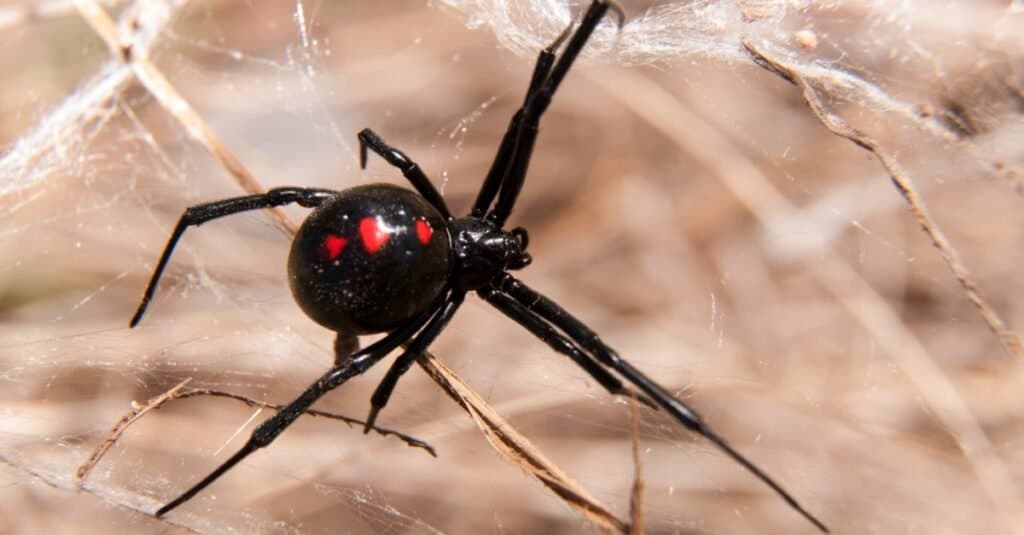
Black widow spiders are the most venomous in North America. Although their venom is stronger than rattlesnake venom, since they are so small their bites aren’t typically as harmful.
©Sari ONeal/Shutterstock.com
There are almost 900 species of spiders in Texas, but only two of them are dangerous to humans. The brown recluse and the black widow are venomous, and their bites require immediate medical attention. The venomous spider you are most likely to encounter in the Texas desert is the black widow. However, this spider is typically shy and will avoid humans if possible. Bites usually happen when someone unwittingly disturbs the spider, causing it to strike when threatened.
4. Kissing Bugs (Triatomine Bugs)
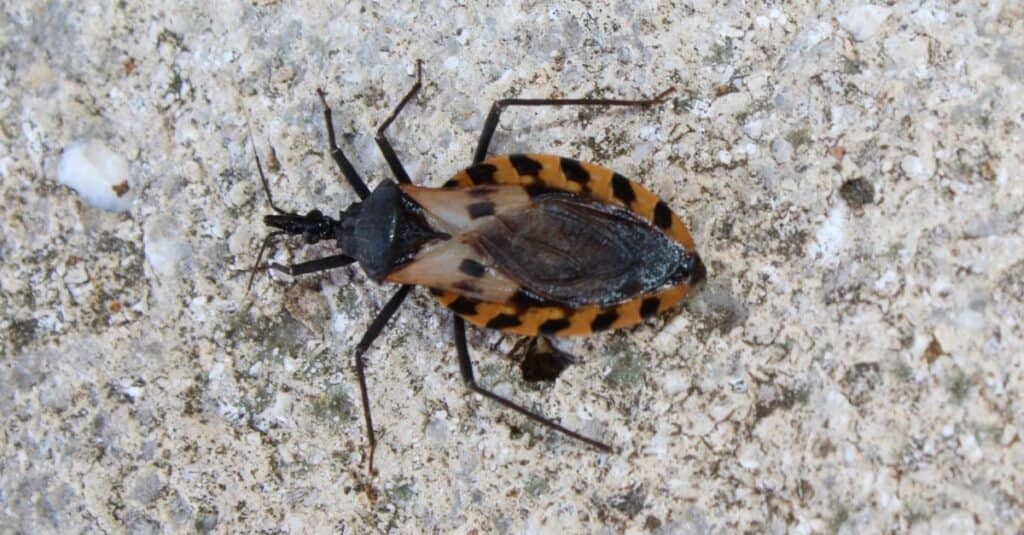
Assassin bugs or “kissing bugs” are named after they practice biting humans on the face near the lips while they sleep.
©Vanessa Becker-Miller/Shutterstock.com
You don’t want a “kiss” from a kissing bug. These bugs are common in Texas’s deserts, and they carry a nasty parasitic disease called Chagas disease. Researchers at Texas A&M University have been extensively studying the insect since 2012 to learn how to protect people and animals from the deadly Chagas disease.
Kissing bugs, also known as triatomine bugs or assassin bugs, feed on people, dogs, and wild animals while they sleep. They first inject their victims with a numbing agent and then feed on them. Unlike ticks, they don’t attach to their victims but feed for a few minutes and hop off to the next host. According to the university, 50% of the bugs are infected with the Chagas parasite. For one out of three people, Chagas disease is chronic and can lead to heart conditions or other serious symptoms.
5. Fire Ants

Red imported fire ants came to Texas in the 1950s, and have since been spreading throughout the state. They have been spotted in the far eastern region of the Trans-Pecos.
©NOTE OMG/Shutterstock.com
Despite the scary reputation of fire ants, most are not dangerous to humans. However, there are a few species out of Texas’s 200 different types that can pack a painful sting. The golden fire ant, or desert fire ant (Solenopsis aurea) has venom which can result in swelling and hives. Some people may be allergic and will need immediate medical care after a sting. Native to the area, the desert fire ant can be found across the southwestern United States, including the Texas Trans-Pecos region. Its identified by its pale golden color with a few brown spots.
Another fire ant, the imported red fire ant, is more aggressive than native species of fire ants. If a colony of imported red fire ants is disturbed, they will attack and swarm the intruder in large numbers, whether it’s a human or animal. These ants arrived from South America in the 1930s and can now be found across the southern half of the United States.
6. Mountain Lions
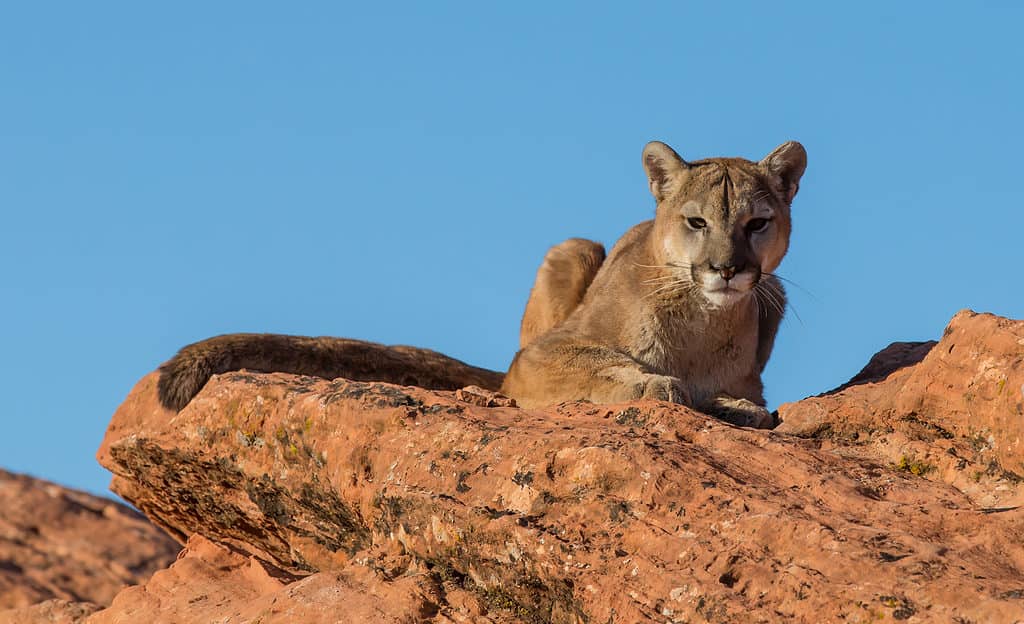
Mountain lions are elusive predators, living in remote areas of Texas.
©Warren Metcalf/Shutterstock.com
Although mountain lions are reclusive, they have been known to occasionally attack people. They live in remote areas and can be found throughout the Trans-Pecos. Texas mountain lions range in weight from 70 to 170 pounds. They are also called cougars, pumas, and panthers. They prey on desert mules and white-tailed deer. Experts recommend if you encounter a mountain lion in the wild to back away slowly. Don’t turn and run; you will be seen as prey to the lion.
7. White-Tailed Deer
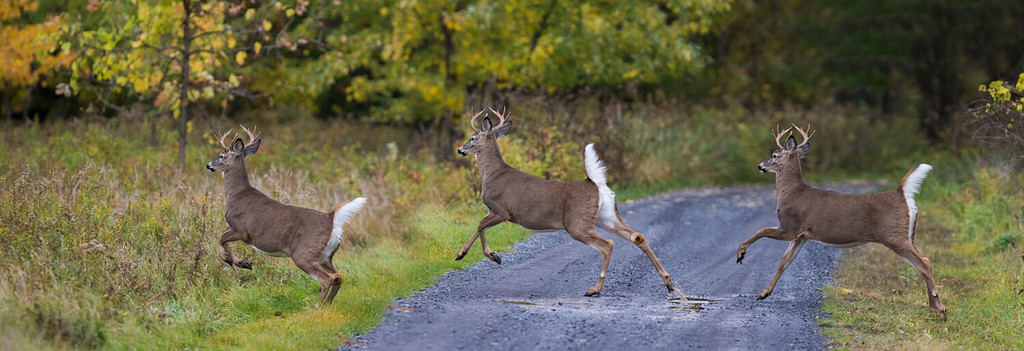
Car accidents involving white-tailed deer happen most often at dusk and dawn.
©Mircea Costina/Shutterstock.com
You may be surprised to see our last entry on the list. White-tailed deer can be dangerous animals, but not in the same way as the other animals on the list. White-tailed deer are timid creatures and there is, of course, no threat of an attack or aggression from one. However, white-tailed deer often dart across the road suddenly and can cause fatal car accidents to an unsuspecting driver. They can thrive in a variety of land habitats, and they can be found in Texas deserts. They are especially dangerous if they are trying to cross the road at night in a rural area without a lot of light.
Summary of the 7 Most Dangerous Animals in the Texas Desert
| Rank | Animal | Type of Danger |
|---|---|---|
| 1 | Snakes | Venomous bite |
| 2 | Scorpions | Venomous sting |
| 3 | Spiders | Venemous bite |
| 4 | Kissing Bugs (Triatomine bugs) | Can carry a parasite that causes Chagas disease |
| 5 | Fire Ants | Can swarm victims, some people are allergic to their sting |
| 6 | Mountain Lions | Sometimes attack humans and pets |
| 7 | White-tailed deer | Can cause fatal car accidents when darting in front of vehicles |
The photo featured at the top of this post is © John A Davis/Shutterstock.com
Thank you for reading! Have some feedback for us? Contact the AZ Animals editorial team.







